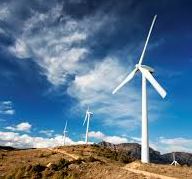The Limitless Power of Latin America: Renewables to Light Up a Continent
 In Latin America, renewable energy can supply up to 22 times the region’s power needs, even taking into consideration future growth. Wind, solar, geothermal, biomass and ocean energy sources can generate up to 80 pWh (petaWatt-hour*) of electricity while by 2050, the projected demand of the region is estimated to run anywhere between 2.5 and 3.5 pWh.
In Latin America, renewable energy can supply up to 22 times the region’s power needs, even taking into consideration future growth. Wind, solar, geothermal, biomass and ocean energy sources can generate up to 80 pWh (petaWatt-hour*) of electricity while by 2050, the projected demand of the region is estimated to run anywhere between 2.5 and 3.5 pWh.
In its report “Rethinking Our Energy Future”, the Inter-American Development Bank (IDB) concludes that renewables are a viable option as costs decrease and new technologies become available. The IDB report shows that several alternative energy sources can already compete on price and availability with more conventional power generating technologies.
The bank’s ground-breaking study also aims to dispel some of the myths surrounding renewable energy, arguing that the emerging sector offers a great many solid investment opportunities to business and interesting policy options to governments that strive to diversify their countries’ energy matrices.
“Renewables are becoming a viable and attractive option that needs be explored,” says IDB President Luis Alberto Moreno: “Though Latin America uses more renewable energy than any other region in the world, the continent faces difficult choices as it seeks to generate the electricity it needs to grow without harming the environment.”
“Renewables are becoming a viable and attractive option that needs be explored.”
– IDB President Luis Alberto Moreno
The bank presented its study earlier this year at the first-ever meeting of the Global Green Growth Forum (3GF) in Latin America. The event – attended by leaders from government, business, finance, civil society and multilateral organizations – took place in Bogotá, Colombia and was hosted by that country’s president Juan Manuel Santos.
3GF is an initiative of Danish Prime-Minister Helle Thorning-Schmidt in partnership with the governments of South Korea and Mexico. Mrs Thorning-Schmidt explains that the Global Green Growth Forum seeks to open up a space for debate on new and green avenues for growth: “We need to challenge conventional economic thinking in order to come up with sustainable development models that can get us out of the economic crisis. We all share the responsibility of fostering the green revolution that will deliver tomorrow’s prosperity.”
According to Walter Vergara, lead-author of the study and head of the IDB’s Climate Change Division, concrete policy initiatives and public-private partnerships are now needed to exploit Latin America’s vast renewable energy potential: “Our study puts the magnitude of this undertaking in perspective, outlining the broad benefits and illustrating policy options.”
Mr Vergara notes that throughout the continent a number of projects are already taking shape. Mexico has recently become the world’s fifth largest producer of geothermal energy. Meanwhile, Brazil now is a leading biomass energy producer. The country converts bagasse – the fibrous matter that remains after sugar cane has been crushed – into electricity.
Biomass now fuels fully 27% of Brazil’s electricity generating capacity. The sector employs well over a million people. Including hydroelectric power, Brazil currently obtains over 85% of its power from renewable sources.
Elsewhere in Latin America a, number of projects are underway to exploit wind, solar and wave power. Finland has recently pledged support to help the Chilean Ministry of Energy set up a WaveRoller power plant to showcase wave power as a promising way to bring energy to remote regions.
During a visit to Chile earlier this year, Finnish Prime-Minister Jyrki Katainen commented that Chile possesses “a near-limitless supply of wave power which is just begging to be harnessed.” The huge tidal swings recorded along the country’s southern shoreline – among the largest in the world – also offer possibilities for large-scale power generation.
Last year, worldwide investments in alternative renewable energy technologies totalled $244bn. However, Latin America represented only 5.4% of this sum. IDB president Luis Alberto Moreno said in Bogotá at the 3GF meeting that his institution will encourage additional investments in renewable energy projects and called upon regional governments to consider enacting legal frameworks that facilitate public-private partnerships to foment development in this sector.
The IDB is currently financing wind farms, solar power system and biofuel plants in the region with an emphasis on projects in rural areas. The bank is also engaged in various schemes that aim to increase the efficiency of hydroelectric power plants by retrofitting dams with state-of-the-art turbines.
* A petaWatt-hour is equal to one trillion kilowatt-hours (1012 kWh). This is approximately three times the amount energy consumed by Mexico annually. Currently, Latin America generates 1.3 pWh.
You may have an interest in also reading…
Ann Low, US Department of State: Combat Corruption by Enabling Tax Payment – El Salvador Case Study
In May 2016, the US Department of State funded a project in El Salvador’s third-largest city, Santa Ana, to discover
Brazilian Brands Abroad
Brazilian brands are expanding internationally. Brazil is rapidly becoming a global powerhouse and “Brand Brazil” has moved on from waxing
Rich Pickings for Carlos Slim, a Financial Prodigy who Started Young — and Kept on Going
Wealth and status mean little to the founder of Grupo Carso who allows himself the occasional indulgence of a fine



















































































